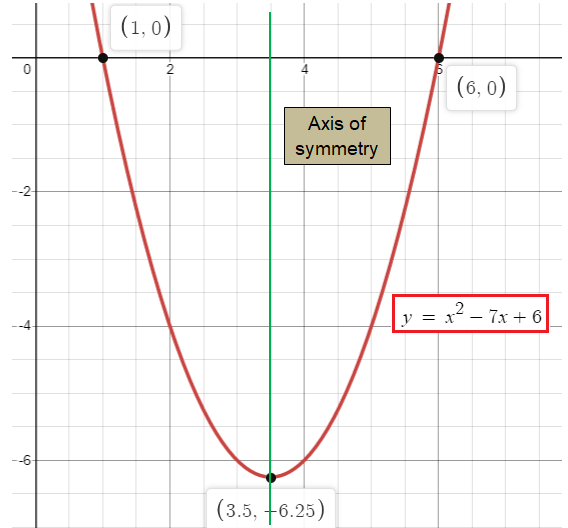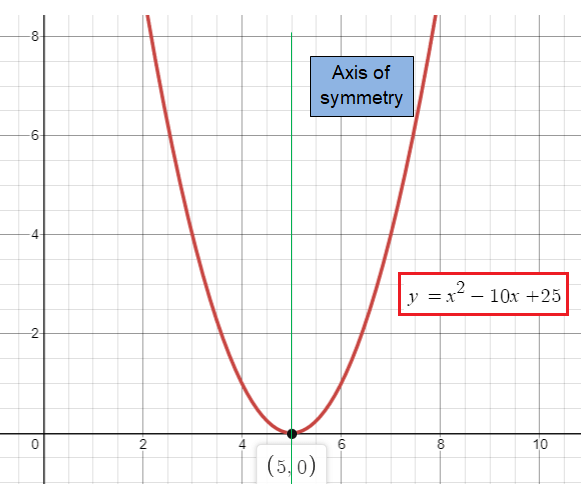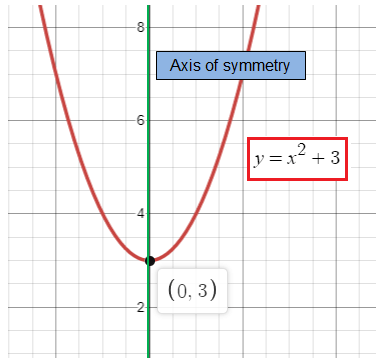SOLVING QUADRATIC EQUATION BY GRAPHING
To solve quadratic function by graphing, first we will find axis of symmetry.
What is axis of symmetry ?
The axis of symmetry is the vertical line, which divides the parabola into two equal parts.
The axis of symmetry will always pass through the vertex of the parabola.
The quadratic function
y = ax2 + bx + c
will have axis of symmetry at x = -b/2a
Solve each equation by graphing.
Problem 1 :
y = x2 -7x + 6
Solution :
Let y = x2 -7x + 6
Comparing the given equation with y = ax2 + bx + c, we get
a = 1, b = -7 and c = 6
x = -b/2a
x = -(-7)/2(1)
x = 3.5
When x = 3.5
y = (3.5)2 -7(3.5) + 6
y = 12.25 - 24.5 + 6
y = -6.25
The vertical line drawn at x = 3.5 will divide the parabola into two parts.
The x-intercepts should be nearer to 3.5.
When x = 1, y = 12 -7(1) + 6 ==> 0
When x = 2, y = 22 -7(2) + 6 ==> -4
When x = 5, y = 52 -7(5) + 6 ==> -4
When x = 6, y = 62 -7(6) + 6 ==> 0

Problem 2 :
y = x2 -10x + 25
Solution :
Let y = x2 -10x + 25
Comparing the given equation with y = ax2 + bx + c, we get
a = 1, b = -10 and c = 25
x = -b/2a
x = -(-10)/2(1)
x = 5
When x = 5
y = 52 - 10(5) + 25
y = 25 - 50 + 25
y = 0
The vertical line drawn at x = 5 will divide the parabola into two parts.
(5, 0) is a x-intercept. By tracing some more points.
When x = 3, y = 32 -10(3) + 25 ==> 4
When x = 4, y = 42 -10(4) + 25 ==> 1
When x = 6, y = 62 -10(6) + 25 ==> 1
When x = 7, y = 72 -10(7) + 25 ==> 4

Problem 2 :
y = x2 + 3
Solution :
Let y = x2 + 3
Comparing the given equation with y = ax2 + bx + c, we get
a = 1, b = 0 and c = 3
|
x = -b/2a x = 0/2(1) x = 0 |
When x = 0 y = 02 + 3 y = 3 |
Axis of symmetry is at (0, 3).
So, it is not having real roots.

Recent Articles
-
Finding Range of Values Inequality Problems
May 21, 24 08:51 PM
Finding Range of Values Inequality Problems -
Solving Two Step Inequality Word Problems
May 21, 24 08:51 AM
Solving Two Step Inequality Word Problems -
Exponential Function Context and Data Modeling
May 20, 24 10:45 PM
Exponential Function Context and Data Modeling